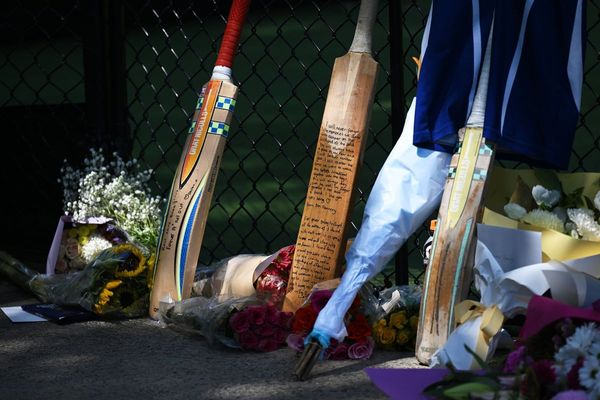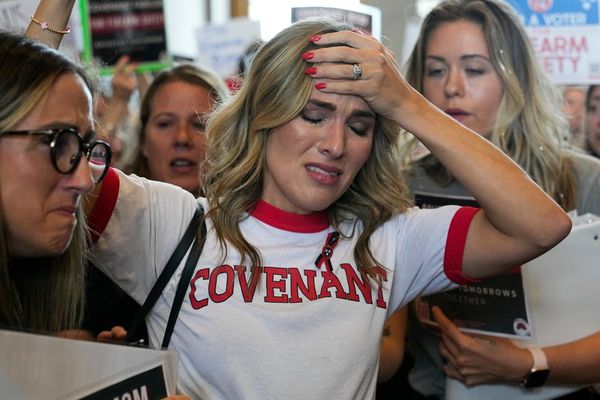
With the backing of France’s Green party EELV, Socialist Party candidate Anne Hidalgo secured a second term with pledges to continue efforts to reduce car traffic and transform the city into a friendlier place for cyclists and pedestrians.
Hidalgo’s administration created 50 kilometres of new bike lanes as a public health measure as Paris joined the rest of the country in emerging from coronavirus confinement on 11 May, arguing the lanes would decongest public transit and limit the use of cars.
[CARTE 🚲🚧🚲]
— Collectif Vélo Île-de-France (@VeloIdF) May 4, 2020
Vous préparez votre #Deconfinement à vélo ? On vous aide à trouver votre route avec @GrandParisMGP avec notre carte qui recense :
✅les #pistescyclablestemporaires réalisées et en projet
✅Les aménagements cyclables déjà existantshttps://t.co/zvYwp1ZdBz
Just ahead of the official campaign period for the coronavirus-delayed second round of the municipal elections, the incumbent mayor promised that a vote for her meant temporary lanes would be there to stay.
“I will do what’s needed for these transitional measures to become permanent,” Hidalgo told French radio in early June. “It would need to be approved by a vote and be carried out through proper procedures, which will happen if I am elected.”

With Hidalgo’s campaign securing 96 of 163 seats on Paris city council, the vote should pass without much problem.
The move would also need to clear a legal hurdle in the Council of State, France’s highest administrative court, after motorists’ lobby group Roulez Libre issued a complaint objecting to the reduction in space for cars.
Permanent bike lanes on key streets
The additional 50km is a small addition to a city already equipped with 1,040km of bike lanes.
But many of the new lanes radically alter the flow of traffic within the city, and their conversion goes a long way to reducing road traffic and developing cycling routes.
Bike lanes set up in #Paris as temporary measures after coronavirus confinement are on track to become permanent, a campaign promise of recently reelected mayor Anne Hidalgo.
— mike woods (@mawoods) June 30, 2020
One of the most symbolic new lanes is on the rue de Rivoli, passing city hall and the #Louvre museum. https://t.co/5gBt4vhAjb
One of the most symbolic conversions is along the rue de Rivoli, a key artery between the Bastille and Concorde roundabouts that passes by the Hotel de Ville city hall and the Louvre museum.
The rue de Rivoli conversion make it possible to cycle from the Bastille monument to the business district of La Défense to the west of Paris, whose office towers are a destination for many commuters.
The route follows part of Europe’s busiest commuter train line, the RER A suburban train, as well as line 1 of the Paris metro.
Canal Saint-Martin to be reserved for pedestrians
Hidalgo has also pledged to close roads along the Saint-Martin canal, a popular site for picnics and gatherings in eastern Paris.
Only residents and emergency vehicles would be allowed access to the quais on either side of the canal.
The local town hall has already announced the launch of construction work, indicating rerouted traffic, new bike lanes and road closures.
🚶♂️ 🚴🏻 Dès ce 25 juin, sera lancée la 1ère phase de la piétonnisation du canal Saint-Martin ! Pour des quais plus respirables, paisibles et sûrs, notamment dans le contexte de distanciation physique. Toutes les infos par ici ⤵️https://t.co/X8FIntB8MC pic.twitter.com/cmd2H7n5pe
— Mairie du 10e (@Mairie10Paris) June 24, 2020
Hidalgo has also promised to reduce air pollution, which has rebounded to its pre-coronavirus level.
Paris plans to have no diesel vehicles by 2024.
Technically, Hidalgo was not re-elected in Sunday’s vote, but heads the list of candidates that won 96 of 163 seats on Paris city council, which will elect her as a formality on 3 July.







